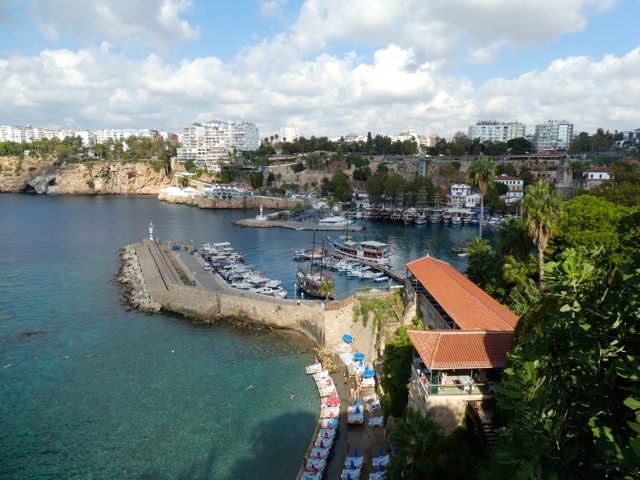
Antalya Kaleiçi
Photographs by Mike Vickers
Feature photo above: The little ancient harbour at the centre of a huge modern city
Antalya’s Old Town, or kaleiçi, is the historic centre of the city and well worth visiting. A number of our friends have been on more than a few occasions and highly recommended going, so, armed with a hire car and spurred on by the suspicion lockdown will be returning very soon, Jan and I thought we’d give it a go while we still could.
Not being particularly time pressured, we chose the longer coastal route using – yes, you’ve guessed it – the D400, my favourite road that connects Fethiye to the rest of the world. All I can say is that we enjoyed a wonderful drive along corniche after corniche, with endless views out over the sparkling Med. We stopped in Demre for lunch at a seafront restaurant and despite the gloriously inviting sunshine, found the enormous beach virtually deserted, then drove on through Finike, Kumluca and past Kemer before finally drawing breath and diving into the expansive metropolis of Antalya.
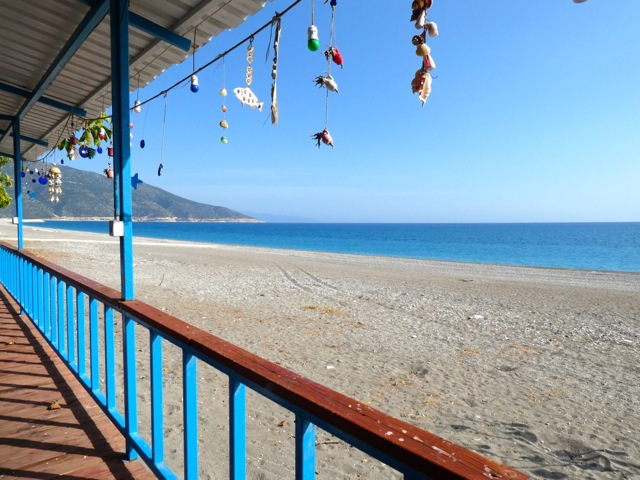
This is a rapidly-growing modern city of over 2.2 million, the fifth largest in Turkey, and we had to negotiate kilometres of busy urban dual carriageways before even getting close to the Old Town. Frankly, with some horrendous one-way systems and confusing narrow streets to negotiate, we would never have found our hotel without the satnav on Jan’s phone. She’ll tell you I have a pretty good sense of direction and seldom get lost, and I’d thoroughly prepared by studying Google Earth and knew our destination was close to Hadrian’s Gate, but without that useful little app we’d still be there wandering around aimlessly whilst slowly expiring from hunger.
Access to the kaleiçi by vehicle is, thankfully, restricted and all incoming roads have barriers, but once the attendant understood we were searching for our hotel we were allowed through and found the 1207 Hotel just inside the old walls. Like any number of boutique hotels in the Old Town – and we can assure you there are an abundance to chose from – the 1207 comprises several adjacent renovated Ottoman houses, substantial and elegant, clustered around an intimate covered courtyard. On checking in, a young lad whisked our car away to park it god-knows-where and we didn’t see it at all until he brought it back two days later when we were checking out.
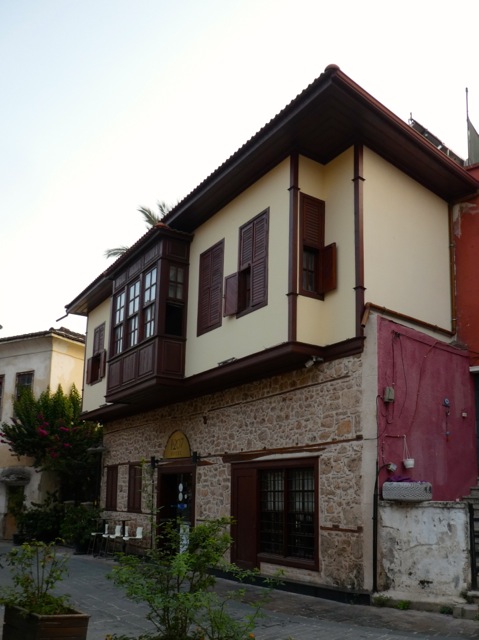
Stepping out that evening, we wound our way down through the rabbit warren of narrow streets, mercifully almost completely devoid of traffic, often glimpsing other stylishly discreet hotels through open doorways, before eventually arriving at the harbour. Flanked and embraced by cliffs and massive fortifications, this is a snug and enclosed haven with a small flotilla of private and day trip boats bobbing at their moorings. The only indication of the truly enormous size of the modern bustling city lying just over the cliffs was an endless necklace of urban lights shimmering all along the bay to the base of the distant mountains.

It’s difficult to imagine but Antalya once consisted only of the kaleiçi, the compact town ending at its walls with nothing beyond. This was prudent in olden times, when many settlements huddled within the safety of their protective fortifications, and substantial sections of these enormous walls still remain and can be glimpsed as you walk around the streets, often towering above the roofs of nearby buildings. Unsurprisingly, because of its long history, the kaleiçi contains structures from the Roman, Byzantine and Seljuk periods, but most of its remaining architecture is 18th and 19th century Ottoman, with the occasional truly dreadful 20th century concrete monstrosity thrown in to make you realise just how far we’ve not progressed in recent times. Talking of tasteful, we also came across a wonderfully eccentric seagull-themed public phone box. If you’re in urgently need of an ambulance but suffer from ornithophobia, then it’s just not your day…
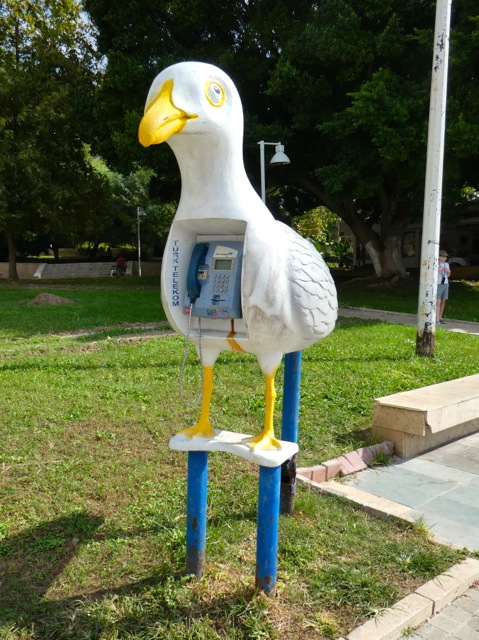
One of the most impressive monuments in the kaleiçi is the triumphal Hadrian’s Gate, set between two chunky towers in the historic city wall. Three graceful columned arches still allow pedestrian access to the town after almost two millennia. An indication of its great age can be seen on the paving under the central arch, where two deep ruts have been worn in the stone floor, created by the wheels of countless carriages and carts over many centuries of use.

We stopped at a tea house overlooking the harbour and watched the sunset, then promptly got lost trying to find our way back to the hotel. This became the recurring theme of our short stay, but as we finally discovered, the most direct route from the scary seagull phone box back to the hotel is right, right, left, 2nd left, left again, then 4th right, left through the dog-leg, then finally right at the line of decorative bollards, but this simple easy-to-remember path proved way beyond our navigational competence. Even using the sat nav, we were once actually able to get within 100 metres of our destination before making a tiny error that led to us immediately plunging back into the maze once again. Still, looking on the bright side, at least we walked off dinner…

The following morning, after an excellent 1207 breakfast, we set out to explore further, although most normal people would realistically describe that last statement as getting lost again. That said, we investigated the delightful gardens above the harbour with their dramatic driftwood sculptures, met lovely Simit Man, had a nose around the folk museum and generally ambled wherever our fancy took us, mainly in the immediate surroundings of the harbour.



Over lunch, I mentioned to Jan that since it was Republic Day the following day, would it not be a good idea, just in case it was closed, to visit Ikea. We had a shopping list. She agreed and so we sought out a taxi. Being unable to find our parked car, this was the only option open to us, but what we didn’t count on was being driven by Emerson Fittipaldi! I have to say it’s been a while since we’ve had such an entertaining and sometimes terrifying taxi ride. Frankly, it didn’t start well – the driver had no idea where or what Ikea was!
Fortunately, he did know the way to the airport, which is close enough, and so we embarked on a full throttle, lane-dodging, horn-blasting, traffic light-jumping exercise in quality aggressive driving. It was only when we screeched to a halt outside Ikea and staggered out of the taxi with rearranged internal organs that Jan announced she’d actually found it all rather exciting. I have to acknowledge it was considerably more gripping than pushing a trolley around Ikea. Anyway, loaded down with two bags full of Sweden’s finest, I’m happy to report our return journey to the hotel was in the company of a taxi driver who displayed admirable restraint, a profound respect for traffic regulations and kindly consideration for his passengers – but my word it was nowhere near as exciting.

We took our evening meal in the delightful Kaleiçi Marina Restaurant overlooking the harbour. To reach the dining terrace, we had to pass through an archway in the ancient city wall, and going to the loo was an experience in itself, but not in a bad way – the toilets were set completely within the wall at the end of a 50 metre long military tunnel with arrow slits looking out over the harbour. This was definitely a high security tinkle!
We checked out the following morning after another delicious breakfast which contained – and we could not understand why – three fried eggs between the two of us, and after the young lad had retrieved our car from where he’d hidden it (if he’d been dismissed during our stay, the car would still be there now) we used Sally Satnav to guide us back out through the city and returned to Fethiye over the mountains on the D350, breaking the journey with a stop at Korkuteli for tea and marvelling at the lush autumn colours of the poplar and walnut trees all the way home.
Do you know, we had a great time and absolutely loved the kaleiçi. We will definitely be going back.


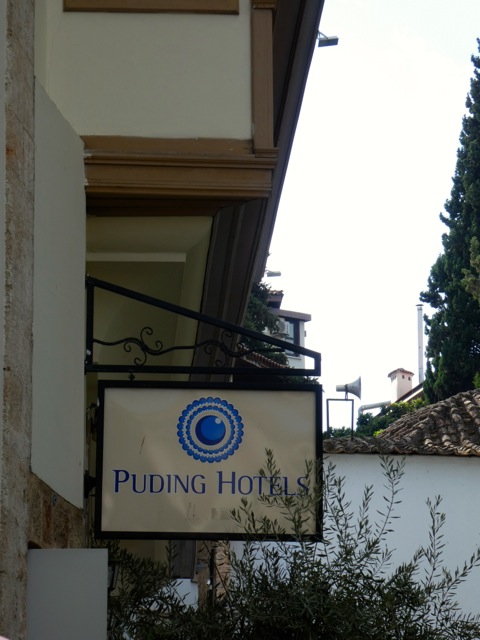


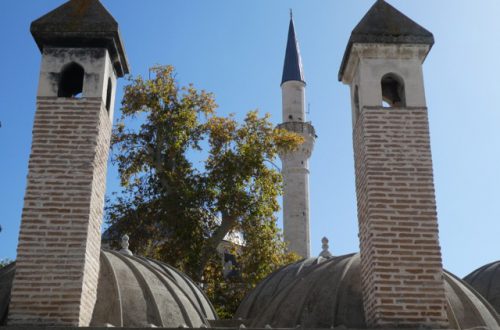
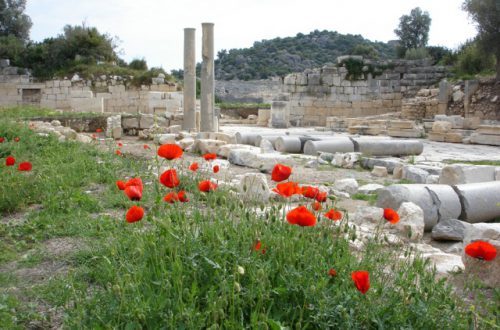

One Comment
Adam
Love it!